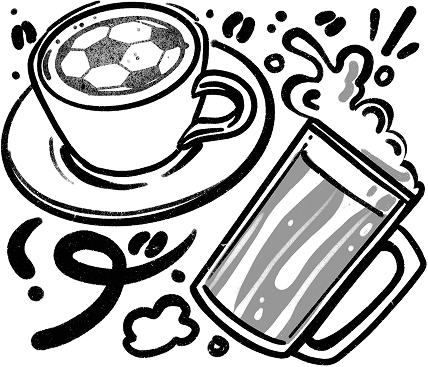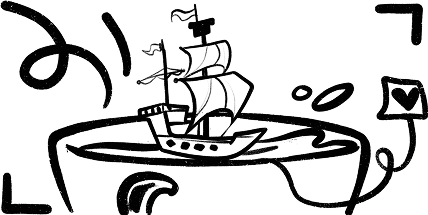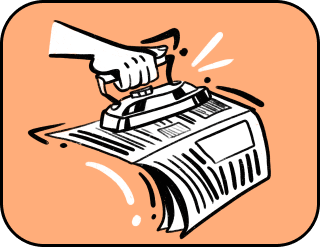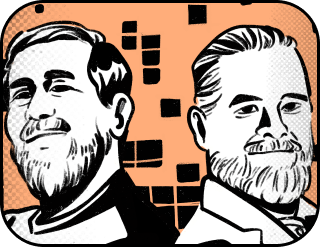Category: Cognitive technologies
The physical culture of drinking: from champagne to energy drinks
“Come to my place sometimes to listen to a drink or two”
Boris Vian, Froth on the Daydream
There won’t be enough bread for the circuses to leave a lasting impression. A refreshing drink will enhance the effect or amplify the emotional impact. Yes, the tongue gets tied. That’s understandable for a sports bartender. No, no, it’s not because of sparkling wine. I enjoy talking about sports and life. The one thing flows into the other, bubbling and frothing endlessly.
About the froth of football
“Espresso is life”
Max Frei, The Coffee Book
A slightly convex outline of a football on a coffee foam is my personal achievement. I dedicate it to my idol, Pelé. The legendary scorer of 1,280 goals who won three World Cups. The very Brazilian who appeared in the famous 90s commercial for instant coffee Café Pelé by Cacique. The legendary footballer admitted that he refused million-dollar fees for promoting alcoholic beverages. Café Pelé is a completely different story for a native of Santos, a famous coffee port in Brazil.
By the way, Brazilian football announced its connection to the invigorating drink a bit earlier. In 1980, the national team’s uniform was decorated with coffee beans—the logo of the Brazilian Coffee Institute, which sponsored the team.
The new millennium’s football still carries a coffee aroma. Thanks to the ecological enthusiasm of the “greenest” club, Forest Green Rovers (England). Special jerseys made from coffee grounds and plastic were developed for the players.
I’ve long been waiting for the right moment to remove the beer cap from football fans’ glasses. The stands are inspired not only by beer. The intoxicating drink has seeped into sports traditions thanks to the generosity of beer magnates. Football is not only about passion and excitement. The reverse side of brand sponsorship is fans’ painful obsession not only with the game itself. The tradition led to the appearance of a beer pipeline at a stadium in Gelsenkirchen, Germany.
Personally, I would be more delighted with vending machines selling coffee-themed jerseys.

About the froth of race
“Life is a sailing boat…”
Erich Maria Remarque, Heaven Has No Favorites
The champagne in your glass has a sporting nature, I can tell you. Fast and sparkling. By the way, the very word “sport” traces back to Old French “desport,” meaning “game” or “entertainment.” The playful way of truly celebrating victory with champagne was invented by Formula 1 drivers.
It all started traditionally—it was a story of one sponsorship. In the mid-20th century, Formula 1 raced through the roads of French Champagne. Local producers demonstratively toasted the winners—not with green tea, of course. That was just the first drop. A sea of pleasure from champagne splashes would follow later. Back in 1966, when American driver Dan Gurney, instead of symbolically sipping the victory drink on the podium, poured champagne over everyone who loved speed.
Since then, Formula 1 has had a foamy trail. The chances of leaving the winner’s rain dry are slim: sponsors and manufacturers carefully increased the prize bottle volume to three liters. However, in this case, the contents of the bottle are no more important than the tradition itself. Lemonade can also be quick and sparkling—verified. In Islamic countries, victory in Formula 1 is joyfully celebrated with bottles of this non-alcoholic bubbly drink. The pleasure from this doesn’t diminish.
Sea–mast–matcha–tea… You’re not in a hurry, right? I have another non-alcoholic story about a foamy race in reserve. Refreshing as Chinese black tea, which once led to a new sport in England—clipper races.
Can’t you imagine what it’s about? Even the English didn’t know what a clipper was for a long time. But they knew their Chinese tea and sent “shuttles” to China for valuable cargo—by ordinary ships. The awaited tea took 2–3 years to arrive. The process was sped up with the invention of the American competitors—the clipper sailboat of a new generation. It was designed to reach a respectable commercial speed for that time. Long narrow hulls slicing through waves, tall masts, and extra sails significantly reduced travel time. At the end of the 19th century, British merchants tested out a hired American clipper called Oriental. They liked it—the tea route shortened several times over. The British didn’t hesitate to borrow technical solutions from their competitors to upgrade their sailing fleet.
Storms and calms are dangers; pirates and rivals are risks; speed is adrenaline. Combining these elements into one formula gives us racing. The famous tea races of clippers, where bravery and the first cargo of perishable goods earned a prize from trading companies—history remains silent on how maritime victories were celebrated.

About the (In)Transparency of Sports Victories
“A single glance at the millions of bubbles fluttering in the glass is already soothing”
Ryu Murakami, Piercing
Despite the fact that history is generally not as talkative as your humble servant, one fascinating fact has nonetheless surfaced through the centuries. According to scientists, doping is not the work of modern alchemists. The unathletic tradition of drinking wine for courage before important competitions has existed for a very long time. “Amphora” doping thrived even during the ancient Olympic Games on the homeland of such a brave (interesting why) Hercules.
Today, athletes stimulate themselves with energy drinks, simulating honest results. Not waiting for an invitation to the Olympic Games—in everyday routines.
The heart beats faster. Blood pressure rises. But it’s not the barbell causing this—it’s guarana (or ginseng) and caffeine, which splash in the glass of a chemical recharge enthusiast. The athlete will insist that he “doesn’t take a drop of alcohol.” And he won’t be lying. Why would he need to when taurine in an energy drink is hundreds of times more than in a glass of red wine? The effect is the same: maximum endurance—minimum fatigue. If a prudent manufacturer adds B-vitamins to the tonic drink, the consumer will temporarily maintain an illusion of clear thinking and control over emotional surges. The carbohydrate “bonus” (glucose, sucrose, fructose) enhances the illusion of a power surge.
The short-term euphoric effect from a productive workout is caused by adrenaline, signaling that the body is experiencing intense stress and working at its limits. When the thrill from the chemical show in the can ends, thrill-seekers won’t return to normal quickly. It will take some time to recover before continuing the marathon of “faster, higher, stronger.”
For a vigorous start and successful finish, I keep an isotonic drink card handy. Especially popular among professional marathon runners and cyclists. Intense training with sweat depletes salts from the body. Mineral deficiency and dehydration quickly manifest as decreased endurance and fatigue. Isotonic drinks replenish fluid and mineral deficits (potassium, sodium, magnesium, calcium). Carbohydrates in isotonic drinks restore spent energy—delicately and purposefully—without options for euphoria or superhero boosts. However, excessive consumption can also send you to the bench.
No offense? We had no intention of nagging you with freshly squeezed juice to prove that sports should be with no alcohol and “energy drink free.” We just wanted your worldview of sports to be filled to capacity. Join this joyful sports community, enjoy a bouquet of honest personal achievements. Let’s meet here again—over a cup of football coffee.

The atomic fortress has fallen. And our hair stands on end!
Thank you!




